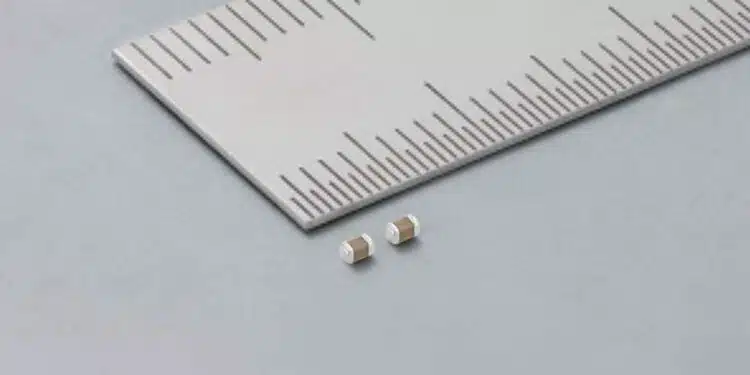Murata Manufacturing Co., Ltd. has begun the world’s first mass production of the 0402-inch size (1.0 × 0.5 mm) multilayer ceramic capacitors (MLCC) with a capacitance of 47µF.
The new product line, available in two variants with different temperature characteristics, is designed to advance MLCC miniaturization and enhance customer system performance.
In recent years, high-performance IT solutions, such as those used in AI servers and data centers, have seen rapid growth. Due to the often high component density demanded by these devices, optimized component placement within limited PCB areas is paramount.
As a result, there is increasing demand for capacitors that offer both miniaturization and higher capacitance, along with high reliability under high-temperature conditions caused by heat generated from PCBs and integrated circuits (ICs).
In response to these requirements, Murata has utilized its proprietary technologies in ceramic dielectric layers and internal electrode miniaturization to facilitate the world’s first mass production of this innovative 47µF product in the compact 0402-inch size.
Compared to Murata’s conventional 0603-inch size product with the same capacitance, this new capacitor reduces mounting area by approximately 60%. Additionally, it delivers about 2.1 times the capacitance of Murata’s previous 22µF product in the same 0402-inch size.
The MLCC is available in two variants – the X5R (EIA) GRM158R60E476ME01 with an operating temperature range of -55 to +85°C, and the X6S (EIA) GRM158C80E476ME01 with an operating temperature range of -55 to +105°C.
The ability to operate in environments up to 105°C, makes the X6S variant well-suited for placement near ICs, thereby contributing to improved device performance and integration. Both devices feature a ±20% tolerance and rated voltage of 2.5Vdc.
Murata is committed to advancing miniaturized capacitors with higher capacitance and improved high-temperature reliability to meet evolving market demands. These innovations not only support the ongoing miniaturization and functional enhancement of electronic devices but also contribute to lower material usage and increased production efficiency per unit, ultimately helping reduce power consumption at Murata’s factories and lessen environmental impact.
































